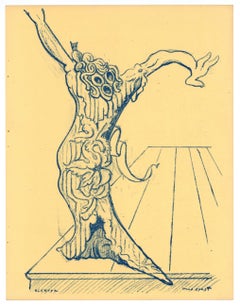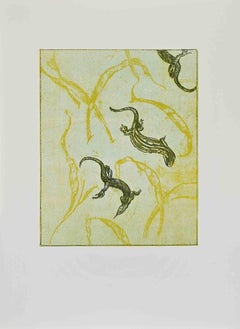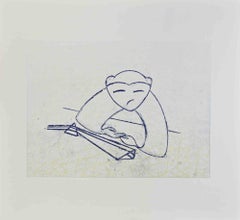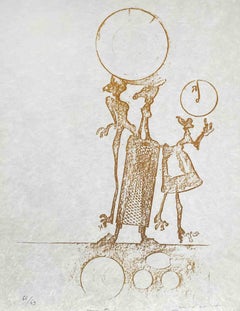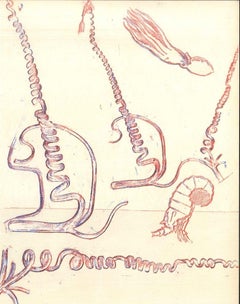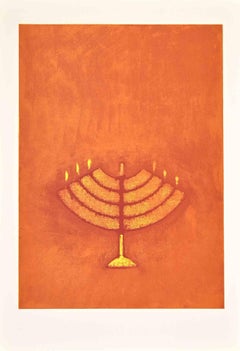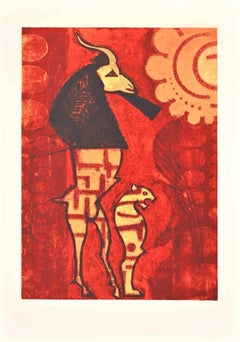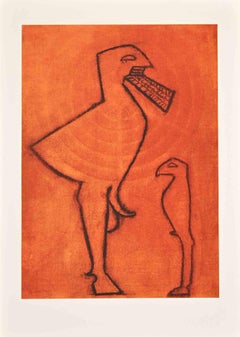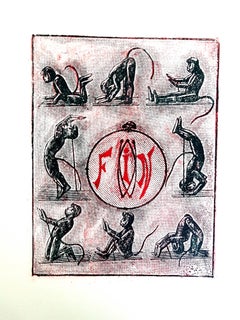Max Ernst Lithograph
1930s Surrealist Prints and Multiples
Lithograph
1970s Surrealist Figurative Prints
Lithograph
1970s Surrealist Figurative Prints
Lithograph
1970s Surrealist Abstract Prints
Lithograph
1970s Surrealist Abstract Prints
Lithograph
1970s Surrealist Figurative Prints
Lithograph
1970s Surrealist Figurative Prints
Lithograph
1970s Surrealist Figurative Prints
Lithograph
1970s Modern Figurative Prints
Lithograph
1970s Modern Figurative Prints
Lithograph
1970s Modern Figurative Prints
Lithograph
1970s Modern Figurative Prints
Lithograph
1950s Surrealist More Prints
Lithograph
1970s Modern Figurative Prints
Lithograph
20th Century Dada Figurative Prints
Lithograph
1970s Surrealist Abstract Prints
Lithograph
1970s Modern Figurative Prints
1970s Modern Figurative Prints
1970s Modern Figurative Prints
1970s Modern Figurative Prints
1970s Modern Figurative Prints
1970s Modern Figurative Prints
1970s Modern Figurative Prints
1970s Modern Figurative Prints
1970s Modern Figurative Prints
1970s Modern Figurative Prints
1970s Surrealist Figurative Prints
Lithograph
1970s Modern Figurative Prints
1970s Modern Figurative Prints
1970s Modern Figurative Prints
1970s Modern Figurative Prints
1970s Surrealist Figurative Prints
Lithograph
1970s Surrealist Figurative Prints
Lithograph
1970s Surrealist Figurative Prints
Lithograph
1970s Surrealist Figurative Prints
Lithograph
1970s Surrealist Figurative Prints
Lithograph
1970s Surrealist Figurative Prints
Lithograph
1970s Modern Figurative Prints
Lithograph
1970s Surrealist Figurative Prints
Lithograph
1970s Modern Abstract Prints
Lithograph
1970s Surrealist Figurative Prints
Lithograph
1970s Surrealist Figurative Prints
Lithograph
1970s Surrealist Figurative Prints
Lithograph
1840s Surrealist Figurative Prints
Lithograph
1970s Surrealist Figurative Prints
Lithograph
1970s Surrealist Figurative Prints
Lithograph
1970s Surrealist Figurative Prints
Lithograph
1970s Surrealist Figurative Prints
Lithograph
1970s Surrealist Figurative Prints
Lithograph
1970s Surrealist Figurative Prints
Lithograph
1970s Surrealist Figurative Prints
Lithograph
1970s Surrealist Figurative Prints
Lithograph
1970s Surrealist Figurative Prints
Lithograph
1970s Surrealist Figurative Prints
Lithograph
1970s Surrealist Figurative Prints
Lithograph
1970s Surrealist Figurative Prints
Lithograph
1960s Surrealist Prints and Multiples
Lithograph
1970s Surrealist Animal Prints
Lithograph
- 1
Max Ernst Lithograph For Sale on 1stDibs
How Much is a Max Ernst Lithograph?
Finding the Right Prints And Multiples for You
Decorating with fine art prints — whether they’re figurative prints, abstract prints or another variety — has always been a practical way of bringing a space to life as well as bringing works by an artist you love into your home.
Pursued in the 1960s and ’70s, largely by Pop artists drawn to its associations with mass production, advertising, packaging and seriality, as well as those challenging the primacy of the Abstract Expressionist brushstroke, printmaking was embraced in the 1980s by painters and conceptual artists ranging from David Salle and Elizabeth Murray to Adrian Piper and Sherrie Levine.
Printmaking is the transfer of an image from one surface to another. An artist takes a material like stone, metal, wood or wax, carves, incises, draws or otherwise marks it with an image, inks or paints it and then transfers the image to a piece of paper or other material.
Fine art prints are frequently confused with their more commercial counterparts. After all, our closest connection to the printed image is through mass-produced newspapers, magazines and books, and many people don’t realize that even though prints are editions, they start with an original image created by an artist with the intent of reproducing it in a small batch. Fine art prints are created in strictly limited editions — 20 or 30 or maybe 50 — and are always based on an image created specifically to be made into an edition.
Many people think of revered Dutch artist Rembrandt as a painter but may not know that he was a printmaker as well. His prints have been preserved in time along with the work of other celebrated printmakers such as Pablo Picasso, Salvador Dalí and Andy Warhol. These fine art prints are still highly sought after by collectors.
“It’s another tool in the artist’s toolbox, just like painting or sculpture or anything else that an artist uses in the service of mark making or expressing him- or herself,” says International Fine Print Dealers Association (IFPDA) vice president Betsy Senior, of New York’s Betsy Senior Fine Art, Inc.
Because artist’s editions tend to be more affordable and available than his or her unique works, they’re more accessible and can be a great opportunity to bring a variety of colors, textures and shapes into a space.
For tight corners, select small fine art prints as opposed to the oversized bold piece you’ll hang as a focal point in the dining area. But be careful not to choose something that is too big for your space. And feel free to lean into it if need be — not every work needs picture-hanging hooks. Leaning a larger fine art print against the wall behind a bookcase can add a stylish installation-type dynamic to your living room. (Read more about how to arrange wall art here.)
Find fine art prints for sale on 1stDibs today.
- Where did Max Ernst live?1 Answer1stDibs ExpertApril 26, 2024Max Ernst lived in several places during his life. He was born in Brühl, Germany, in 1881 and later moved to Bonn to attend the university located there. Then he settled in Cologne, not far from his birthplace. In 1922, Ernst moved to France, where he soon became affiliated with Surrealism, the avant-garde art movement taking shape in Paris. Alongside Man Ray, Joan Miró and others, Ernst was among the first visual artists to experiment with imagery and techniques associated with Surrealism. When Germany occupied France during World War II, Ernst escaped to America with the help of patron and collector Peggy Guggenheim, whom he married in 1941. While living in New York, Ernst's work and techniques proved instrumental in inspiring the early development of Abstract Expressionism. He later moved to Sedona, Arizona, where he lived with his fourth wife, Dorothea Tanning, a fellow Surrealist and prolific visual artist and poet. While Ernst and Tanning are largely responsible for Sedona's reputation as an artist colony, they relocated to France in the 1950s and remained there until Ernst's death in Paris in 1976. On 1stDibs, shop a collection of Max Ernst art.
- 1stDibs ExpertMarch 13, 2024You can see Max Ernst paintings in many places around the world. The Max Ernst Museum Brühl des LVR in Brühl, Germany, is home to one of the largest exhibitions of his work. Other museums that have Max Ernst paintings in their permanent collections include the Museum of Modern Art in New York, New York; the San Francisco Museum of Modern Art in San Francisco, California; the Art Institute of Chicago in Chicago, Illinois and the Detroit Institute of Arts in Detroit, Michigan. Explore a range of Max Ernst art on 1stDibs.
- 1stDibs ExpertNovember 20, 2024Max Ernst contributed to Surrealism by pushing the boundaries of the movement with his unconventional methods of printmaking, drawing and collage. He invented frottage (French for “rubbing”), wherein an artist rubs a pencil or crayon over a paper atop a textured surface, and later grattage (French for “scraping”), where a similar technique is applied with paint. Both methods showcase Ernst’s fascination with the unconscious and serendipitous elements of artistic creation, a theme that resonated with the Dadaists and the Surrealists. Ernst had deep knowledge of psychoanalysis and Sigmund Freud’s dream theories, which were big influences on Surrealists. He was among the first Surrealists to use Freud’s work to examine his own creative impulses. He also published a series of books of his collages, all of which were deeply symbolic and often philosophical. Explore a selection of Max Ernst art on 1stDibs.
- 1stDibs ExpertOctober 15, 2024Max Ernst used Surrealism to process the traumas he experienced during World War I. His early works consisted largely of collages, which allowed him to represent the shards, rubble and explosions from his wartime experience. In 1922, Ernst moved to France, where he soon became affiliated with Surrealism, the avant-garde art movement taking shape in Paris. Alongside Man Ray, Joan Miró and others, Ernst was among the first visual artists to experiment with the imagery and techniques that became associated with Surrealist art. Ernst’s greatest contribution to the Surrealist movement is often considered his invention of frottage, wherein an artist rubs a pencil or crayon over a paper atop a textured surface, and later grattage, where a similar technique is applied with paint. Both methods showcase Ernst’s fascination with the unconscious and serendipitous elements of artistic creation, a theme that connected the Dadaists and the Surrealists. Explore a range of Max Ernst art on 1stDibs.
- 1stDibs ExpertOctober 30, 2024How much Max Ernst paintings are worth depends on their size, history, condition and other factors. In 2023, his oil-on-panel piece Taya's Sun sold for more than $304,000 at auction. Ernst was a pioneer in the Dada and Surrealist movements, pushing their boundaries with his unconventional methods of printmaking, drawing and collage. If you own an Ernst, consider having a certified appraiser or experienced art dealer evaluate it. Explore a selection of Max Ernst art on 1stDibs.
Read More
Joan Mitchell’s Rare, Late-Career Diptych Buzzes with Life
Beneath the inky blackness, the painter’s irrepressible energy electrifies this pair of intaglio prints.
The 1stDibs Guide to Types of Abstract Art
Get to know the key movements and artists who have influenced visual culture for more than a century.
Romare Bearden’s Humanity Infuses His Bright, Bold Art
Through collage, painting and printmaking, the artist foregrounded Black life in America in revolutionary new ways.
Andy Warhol and Suzie Frankfurt’s ‘Wild Raspberries’ Cookbook Is an Artful, Fanciful Delight
This set of recipes and original prints might not make you a better chef. But it will make you smile.
Art Brings the Drama in These Intriguing 1stDibs 50 Spaces
The world’s top designers explain how they display art to elicit the natural (and supernatural) energy of home interiors.
Welcome (Back) to the Wild, Wonderful World of Walasse Ting
Americans are rediscovering the globe-trotting painter and poet, who was connected to all sorts of art movements across a long and varied career.
Shapero Modern’s Director Tells Us All about 20th-Century Prints
Tabitha Philpott-Kent knows a lot of art multiples. Here, the London gallery director talks about what makes printmaking so fabulous.
Yoshitomo Nara Puts a Punk Rock Twist on the Traditional Prints of His Ancestors
The forever-rebellious Japanese artist craftily defaces famous Edo Period woodblock prints with “In the Floating World.”
